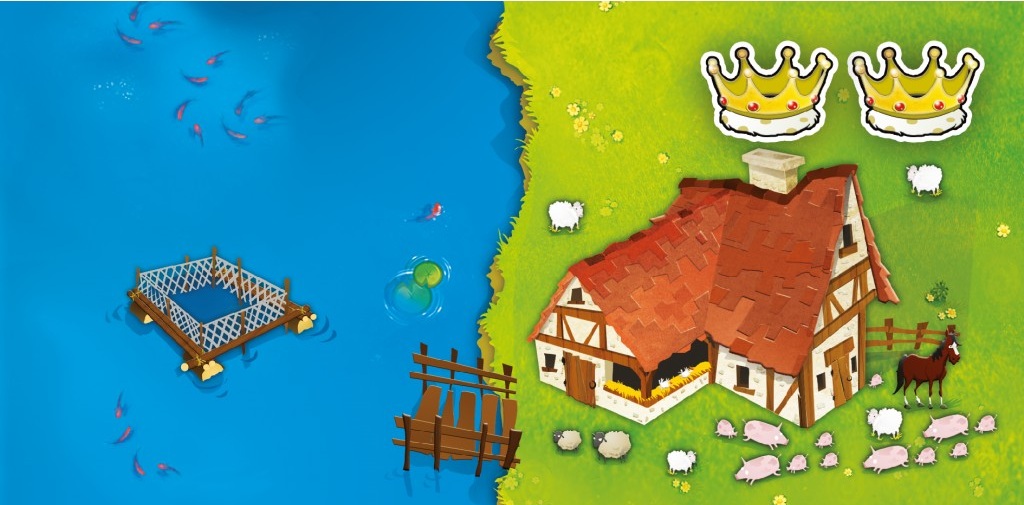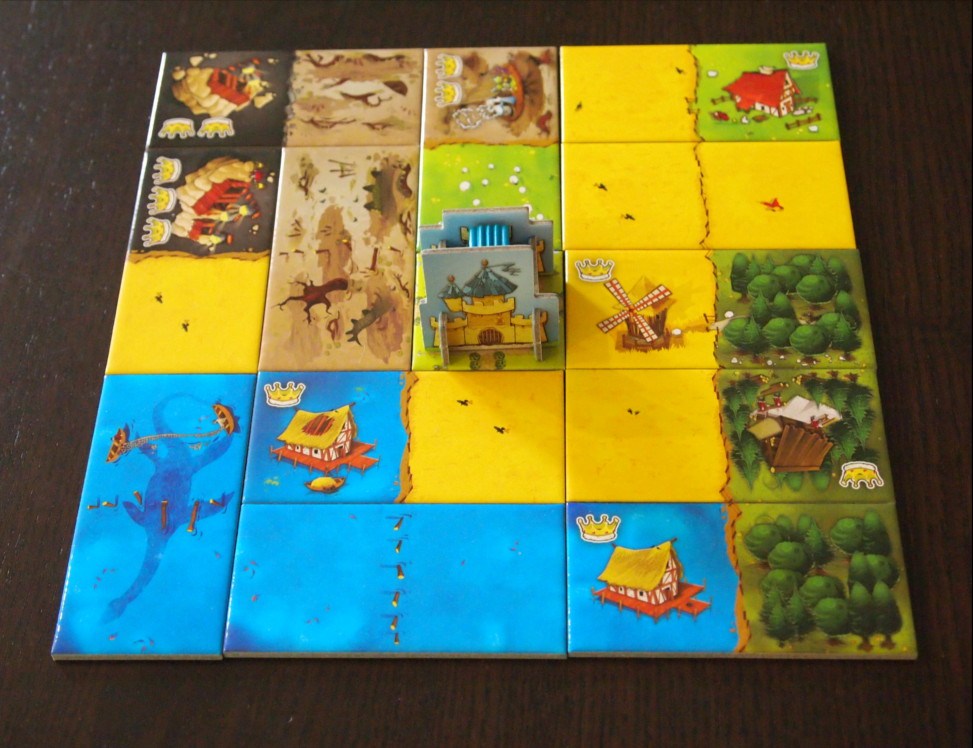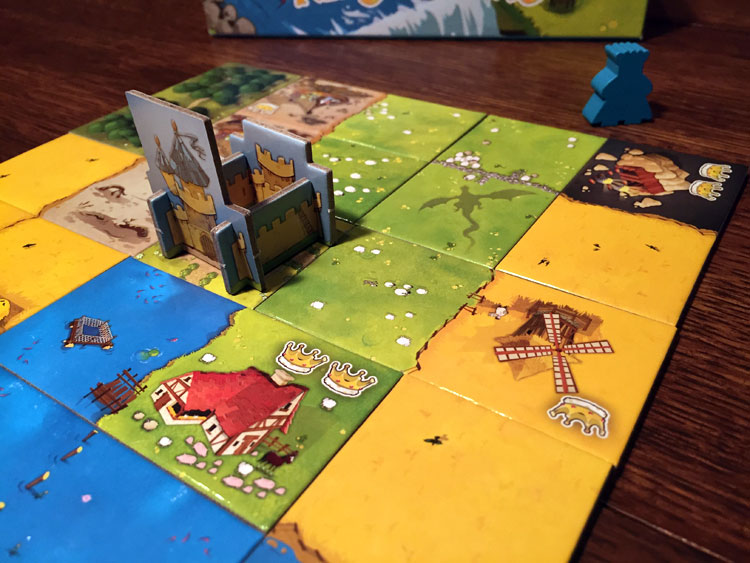Kingdomino
Players: 2-4
Ages: 6 and up
Purchase: Buy on Amazon (affiliate link)
Math Ideas: Multiplication, Spatial reasoning
Questions to Ask:
Where can you still place tiles? Why?
How many points do you have so far?
What dominos are you hoping for? Why?
This week, I'm sharing one of the games from my Holiday Gift Guide. I hadn't intended to write about Kingdomino so soon, but my son just can't get enough of the game. As it happens, I was able to capture some great video of him thinking through some of the math in the game, and I couldn't resist sharing.
Kingdomino is a great game for two, three or four players, but my son and I both prefer the two-player version. The strategy gets harder, the scores go higher, and there seem to be more ways to win.
How to Play
In Kingdomino, each player is trying to build a kingdom surrounding their castle. Players take turns choosing dominos, which have two sections of land. In the tile at left, you can see a section of green farmland and a section of water. Do you notice those two crowns on the farmland section? Keep that in mind - they make a big difference!
Players can only add tiles to their kingdom if one section matches an existing section of land. So the tile pictured can only be placed next to another water tile or another green farmland tile. The goal of the game is to make big sections of matching land. One tough restriction, though: the kingdom must fit entirely inside a 5x5 square (or 7x7 in the two-player variation)!
At the end of the game, players count up the number of adjacent tiles of the same color, and then multiply that number by the number of crowns in that section of their kingdom. So in the kingdom shown, there are six blue tiles with two crowns, so the score for blue tiles is 12. Players find their score for each section of tiles, adding up their score for each color to see who is the winner!
The game has a few more rules involving how tiles are chosen and sorted, but they're pretty easy to comprehend once you've played through the game once.
If you'd like, you can watch a quick video tutorial below:
Where's the Math?
Kingdomino gets kids thinking in two areas of math simultaneously: spatial reasoning and multiplication.
Tiles can only be played if they match other existing tiles of the same color. For that reason, players need to make sure they have places to play all the tiles that they choose, or else they are forced to discard valuable dominos!
Not only that, but your child must keep their entire kingdom inside a 5x5 square! At the beginning of the game, they have a ton of options for placing their tiles, but as the game progresses, their options get more and more constrained by the existing kingdom. Once they've placed that fifth tile across their kingdom, they can no longer expand in that direction, even if they have the perfect domino for that spot!
The scoring of the game provides kids a chance to think about multiplication. Remember, kids count the number of adjacent tiles and crowns, then multiply those numbers to get their score. That means that your child could have seven grassy tiles, but without a crown they are worthless.
Check out the video below of my son calculating some scores. I love this video because it shows him persevering, even when he doesn't immediately know the answer or makes a mistake. He wants to know the answer, of course, because he wants to know who won the game!
I truly believe that this sort of math learning is much more enjoyable and memorable for kids, precisely because they are motivated to find the answer. If they like the game, they'll do any math necessary to try to win.
Questions to Ask
The first time my son played, he got frustrated at the end of the game when he couldn't extend his kingdom beyond the 5x5 boundary. I found that asking him "How big is your kingdom? Where can you still place tiles?" helped him prepare for the end stage of the game and make tough choices about when and where to expand.
Your kid will do plenty of multiplying at the end of the game. But if you present them with the right question, they'll do a ton of multiplying along the way, as well!
Try asking your child "How many points do you have so far?" This question, especially early in the game, will be easy to answer. They might have three tiles with two crowns, or four tiles with one crown. But it could inspire your child to check their score after each turn, as my son did.
Sure, checking his score made the game longer, but it helped him in two ways: he learned more about the strategy of the game, and he built up his confidence with smaller problems so that the bigger problems felt more doable.
By the end of the game, my son had fifteen forest tiles with six crowns on them. He sat there and thought and thought until he determined the answer: 10 * 6 is 60, and then 5*6 (counting by fives) is 30, so the answer must by 90!
I was, to be honest, floored by his thought process. He obviously noticed how proud I was, because he's spent the past two weeks walking around the house saying "What's 15*6?" and barely letting me reply before blurting out "90!" and running off laughing. I didn't expect him to have learned that multiplication problem before he learned 3*4, but he learned it because it was a meaningful moment embedded in a fun game.
Kingdomino is great fun to play, but more importantly, it has planted a mathematical seed that I get to watch grow as my son makes his way toward multiplication.






